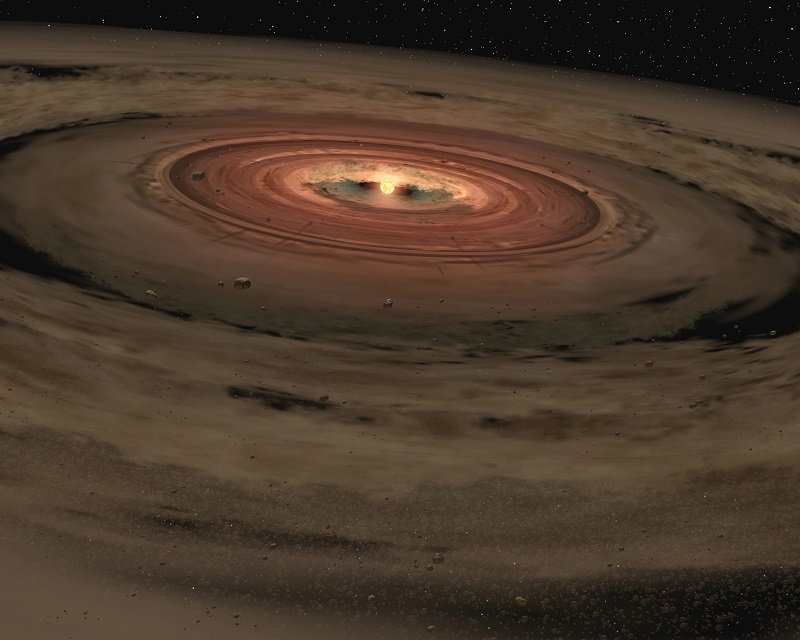Ingekapseld water in gruis kan grote hoeveelheid water op aarde verklaren
Water dat was ingevangen in het gruis waaruit de aarde ontstond, kan de huidige, grote hoeveelheid water op aarde verklaren. Dat betoogt een internationaal team van wetenschappers met een grote Nederlandse inbreng op basis van berekeningen en simulaties. Het onderzoek verschijnt binnenkort in twee artikelen in het vakblad Astronomy & Astrophysics.

Wetenschappers worstelen al lang met een verklaring voor de grote hoeveelheid water op aarde. Een eerste scenario stelt dat het water bezorgd is door kometen en planetoïden die op de aarde insloegen. Volgens een tweede scenario is de aarde 'nat' geboren enwas het water al aanwezig op tien kilometer grote rotsblokken van waaruit de aarde is opgebouwd. De hoeveelheid water die deze grote rotsblokken kunnen bevatten, is volgens de theorie echter beperkt.
Een internationaal team van wetenschappers met veel Nederlandse inbreng heeft nu een variant op het rots-met-waterscenario bedacht en doorgerekend. Het team laat zien dat op de plek waar de aarde ooit is ontstaan, gruis van een millimeter groot wel genoeg water kan vasthouden. Het gruis met water klontert vervolgens samen tot kiezels en uiteindelijk tot kilometers grote rotsen die dan grotere hoeveelheden water bevatten. Dit zijn de rotsblokken die vervolgens de aarde zullen vormen.
Uit de nieuwe berekeningen blijkt verder dat de gruisdeeltjes in 'slechts' een miljoen jaar genoeg water kunnen verzamelen om de hoeveelheid water op aarde te verklaren. Een miljoen jaar past gemakkelijk in de tijd die het kost om grotere rotsen te vormen.
Artikel 1:
Warm dust surface chemistry in protoplanetary disks - Formation of phyllosilicates.Door: W.F. Thi (1), S. Hocuk (1,5), I. Kamp (2), P. Woitke (3), Ch. Rab (2), S. Cazaux (4), P. Caselli (1), M. D’Angelo (2). Opgestuurd naar Astronomy & Astrophysics.
Artikel 2:
On water delivery in the inner solar nebula - Monte Carlo simulations of forsterite hydration. Door: M. D’Angelo (2), S. Cazaux (4), I. Kamp (2), W.F. Thi (1), P. Woitke (3). Geaccepteerd voor publicatie in Astronomy & Astrophysics. https://arxiv.org/abs/1808.06183 (gratis preprint)
1 Max Planck Institute for Extraterrestrial Physics, Duitsland
2 Rijksuniversiteit Groningen
3 University of St. Andrews, Verenigd Koninkrijk
4 Technische Universiteit Delft
5 Tilburg University
